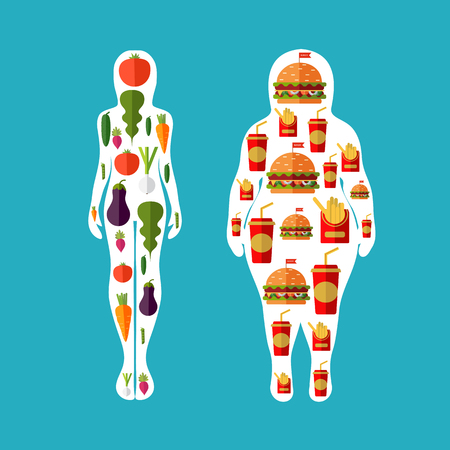Introduction to Meal Preparation and Nutrition Management in Occupational Therapy
Meal preparation and nutrition management are essential daily living skills that occupational therapists (OTs) help clients develop or regain. In the United States, these skills are a cornerstone of independent living and play a significant role in an individuals health and overall quality of life. For many people recovering from injury, illness, or managing chronic conditions, being able to safely prepare meals and make healthy food choices is a key goal of rehabilitation.
Why Are Meal Preparation and Nutrition Management Important?
Meal preparation goes beyond just cooking; it includes planning meals, shopping for groceries, handling food safely, and adapting kitchen tasks to individual abilities. Good nutrition management means not only choosing balanced meals but also understanding dietary needs related to medical conditions like diabetes, heart disease, or food allergies. OTs work with clients to address both areas, supporting their independence at home and in the community.
Core Components Addressed by Occupational Therapists
| Skill Area | Description |
|---|---|
| Meal Planning | Creating grocery lists, selecting recipes, organizing meals for the week |
| Grocery Shopping | Navigating stores, budgeting, selecting healthy options |
| Safe Food Handling | Proper storage, hygiene practices, preventing cross-contamination |
| Cooking Skills | Using adaptive equipment if needed, following step-by-step instructions |
| Nutrition Management | Understanding dietary guidelines, portion control, special diets for health needs |
| Time Management | Simplifying meal prep routines to fit energy levels or physical abilities |
The Role of Culture and Community in the U.S.
In American culture, meal preparation often involves diverse cuisines and family traditions. Occupational therapists respect these cultural preferences while helping clients build skills for healthy eating that fits their lifestyle. Whether its preparing Southern comfort food or adapting traditional holiday recipes for dietary restrictions, OTs personalize strategies for each client’s unique background and daily routine.
2. Client-Centered Assessment Strategies
In occupational therapy practice, especially when addressing meal preparation and nutrition management, using client-centered assessment strategies is essential. This approach ensures that every client’s unique needs, values, and cultural backgrounds are respected. In the U.S., where families come from a variety of cultures and lifestyles, tailoring assessment methods helps create more meaningful interventions.
Examining Culturally Relevant Assessment Tools
Occupational therapists use different tools to understand each clients habits, challenges, and strengths related to meal preparation. Choosing culturally relevant assessments helps OTs recognize food preferences, religious or dietary restrictions, and traditional cooking methods common in American homes. For example:
| Assessment Tool | Description | Cultural Considerations |
|---|---|---|
| Canadian Occupational Performance Measure (COPM) | Client rates performance and satisfaction in daily activities | Open-ended; easily adapted for various food traditions or eating patterns |
| Kohlman Evaluation of Living Skills (KELS) | Assesses basic living skills including meal prep | Includes scenarios relevant to typical American households |
| Occupational Self-Assessment (OSA) | Clients reflect on their own competence in daily tasks | Allows for identification of culturally specific routines and values |
Interviewing Techniques That Respect Client Values
Effective interviewing goes beyond simply asking about favorite foods or meal times. It involves open-ended questions that let clients share their stories, beliefs, and family traditions. Here are some practical interviewing tips:
- Start with broad questions: “Can you walk me through a typical day’s meals at your house?”
- Acknowledge diversity: “Are there any special foods or recipes that are important to your family?”
- Address preferences respectfully: “What do you enjoy most about cooking or eating together?”
- Ask about challenges without judgment: “Are there any parts of meal preparation you find difficult or less enjoyable?”
Approaches That Fit American Lifestyles
The modern American lifestyle often includes busy schedules, reliance on convenience foods, shared meal responsibilities, and varying levels of cooking skill. Occupational therapists consider these realities by exploring:
- The role of technology in meal planning and grocery shopping (e.g., apps for delivery or recipe ideas)
- The importance of social connections during mealtimes (e.g., family dinners or community potlucks)
- Diverse family structures—single-parent homes, multigenerational households, roommates sharing kitchens
- The influence of local food culture—such as grilling in the backyard or celebrating holidays with traditional dishes like Thanksgiving turkey or Fourth of July barbecues
Sample Questions Tailored to American Contexts
| Question Type | Example Question | Purpose |
|---|---|---|
| Cultural/Traditional Foods | “Are there any holiday meals or family recipes you’d like to keep making?” | Honors cultural heritage and personal significance of certain foods. |
| Lifestyle Factors | “How does your work or school schedule affect when and what you eat?” | Takes into account common scheduling challenges. |
| Technology Use | “Do you use any apps or online services for grocery shopping or finding recipes?” | Recognizes integration of digital tools in daily life. |
| Nutritional Preferences/Restrictions | “Does anyone in your household have allergies or follow a special diet?” | Acknowledges health-related dietary needs. |
By combining thoughtful assessment tools with sensitive interviewing techniques tailored to the American context, occupational therapists can better support clients in achieving healthy, meaningful meal preparation routines that fit their real lives.

3. Intervention Approaches and Adaptive Techniques
Evidence-Based Interventions in Meal Preparation
Occupational therapists (OTs) use a variety of evidence-based strategies to help individuals safely and independently prepare meals. These interventions are tailored to fit each person’s specific needs, abilities, and living environment. Some common approaches include:
- Task Simplification: Breaking down meal preparation into smaller, manageable steps.
- Environmental Modifications: Rearranging kitchen layouts for better accessibility and safety.
- Skill Training: Practicing safe knife skills, stove use, and food handling techniques.
- Cognitive Supports: Using visual schedules or checklists for clients with memory or attention challenges.
Assistive Technology and Adaptive Equipment
The right tools can make a big difference in meal prep safety and independence. OTs often recommend adaptive equipment that is widely available in the U.S., including both high-tech devices and simple kitchen aids. Here’s a look at some commonly used options:
| Adaptive Equipment | Description | Who Benefits |
|---|---|---|
| Rocker knives | Knives that require less hand strength and allow one-handed cutting | People with arthritis or limited hand function |
| Jar openers (electric/manual) | Aids that grip and twist jar lids open easily | Seniors or anyone with reduced grip strength |
| Braille/large print measuring cups | Measuring tools with tactile or large visual markings | Individuals with low vision or blindness |
| Stove knob covers/guards | Safety devices to prevent accidental burns or turning on burners unintentionally | Families with young children or adults with cognitive impairments |
| Talking food thermometers | Devices that announce food temperatures aloud | Those with visual impairments or reading difficulties |
| One-handed cutting boards with spikes/clamps | Boards that stabilize food items for safe cutting with one hand | Clients recovering from stroke or amputation affecting one side of the body |
| Pill organizers/reminder apps | Tools for managing dietary supplements as part of nutrition plans | Seniors, people with complex medication regimens, busy families |
| Smart kitchen appliances (e.g., voice-activated ovens) | Appliances controlled by voice commands or smartphone apps for ease of use and safety monitoring | Younger adults with disabilities, tech-savvy users, caregivers monitoring remotely |
Culturally Responsive Nutrition Management Strategies
Nutritional management in occupational therapy also considers cultural diversity within American populations. OTs work closely with clients to respect their cultural preferences and dietary restrictions while encouraging healthy choices. This might involve:
- Selecting culturally familiar foods when teaching meal planning skills.
- Adapting recipes to lower sodium or sugar without sacrificing traditional flavors.
- Collaborating with registered dietitians for medically necessary diets (e.g., diabetes-friendly versions of soul food or kosher meal adaptations).
Personalized Client Education Techniques
OTs provide practical education using real-life scenarios such as grocery shopping, reading nutrition labels, and safe food storage. For example:
| Scenario-Based Teaching Example | Description |
|---|---|
| Navigating a U.S. supermarket | Guidance on finding healthy options within budget; using store maps or shopping lists |
| Reading American nutrition labels | Simplifying label information to identify important nutrients like fiber, protein, or hidden sugars |
| Culturally relevant cooking classes | Teaching adaptive cooking techniques using familiar ingredients from clients’ backgrounds |
The Role of Family and Community Support Systems
An important part of intervention is involving family members, caregivers, and local support networks such as senior centers or community kitchens. Group classes, peer mentoring programs, and caregiver education are effective ways to reinforce skills learned during OT sessions while honoring the diverse fabric of American communities.
4. Promoting Healthy Eating Habits and Food Security
Understanding the Importance of Healthy Choices
Occupational therapists (OTs) play a vital role in helping individuals and families make healthier food choices in their daily lives. Many people in the U.S. face challenges such as busy schedules, limited access to fresh foods, or tight budgets. OTs can help clients develop habits that support both nutrition and independence, making it easier to prepare healthy meals at home.
Nutrition Education Strategies
OTs use hands-on activities and simple education tools to teach about balanced meals and portion sizes. For example, clients may learn how to read food labels, plan a weekly menu, or use the MyPlate guidelines recommended by the USDA.
| Strategy | Description | Example Activity |
|---|---|---|
| Food Label Reading | Teach clients how to identify nutrients and serving sizes on packages. | Practice comparing cereals for sugar content during a session. |
| Meal Planning | Guide clients to create simple menus using affordable ingredients. | Create a 3-day meal plan with recipes based on sale items from a local grocery store. |
| Cooking Skills Training | Help clients gain confidence with kitchen tools and cooking techniques. | Demonstrate how to safely chop vegetables or cook with minimal equipment. |
Addressing Barriers: Food Deserts, Time Management, and Budgeting
Food Deserts
A food desert is an area where people have limited access to affordable and nutritious food. OTs help clients find solutions such as:
- Identifying nearby farmers’ markets or community gardens
- Learning about local food banks or delivery programs
- Selecting shelf-stable healthy options when fresh produce is unavailable
Time Management for Meal Prep
Busy schedules can make cooking at home challenging. OTs teach skills like batch cooking, using slow cookers, or preparing grab-and-go snacks. Here’s a simple time-saving meal prep chart:
| Day of Week | Main Prep Task |
|---|---|
| Sunday | Chop veggies for the week, cook grains (rice, quinoa) |
| Monday-Wednesday | Assemble quick lunches using prepped ingredients |
| Thursday-Friday | Use leftovers for dinner or freeze extra portions |
Budget-Friendly Tips
Eating healthy does not have to be expensive. OTs help clients by:
- Making shopping lists based on sales and coupons
- Selecting seasonal produce for better prices and freshness
- Cooking in larger batches and freezing portions to reduce waste
- Using plant-based proteins (beans, lentils) as affordable alternatives to meat
By exploring these strategies together, occupational therapists support their clients in building sustainable habits that promote good nutrition and greater independence within their own communities.
5. Documenting and Measuring Outcomes
Best Practices for Documentation in Meal Preparation and Nutrition Management
Accurate documentation is essential for tracking progress, communicating with the care team, and justifying continued occupational therapy services. In the context of meal preparation and nutrition management, therapists should clearly describe the client’s current abilities, goals, interventions provided, and observed outcomes. Use client-centered language and include specific examples, such as “client independently prepared a sandwich using adaptive equipment” or “needed verbal cues to follow a simple recipe.” Documentation should also note any safety concerns, modifications made, and client preferences.
Outcome Measurement Tools
Choosing the right measurement tools helps objectively track functional gains and satisfaction. Standardized assessments like the Canadian Occupational Performance Measure (COPM), Functional Independence Measure (FIM), or the Kitchen Task Assessment (KTA) are commonly used in American practice. These tools can capture changes in performance, independence, and satisfaction with meal-related tasks.
| Assessment Tool | What It Measures | How It’s Used in Meal Prep |
|---|---|---|
| COPM | Client perception of performance & satisfaction | Interview clients about goals like “making breakfast” or “planning meals” |
| KTA | Functional ability in kitchen tasks | Observe performance during meal prep activities |
| FIM | Level of assistance required | Score independence when preparing snacks or meals |
Collaborating with Interdisciplinary Teams
Maximizing client satisfaction and functional gains often requires teamwork. Occupational therapists regularly collaborate with dietitians, speech-language pathologists, nurses, and caregivers to ensure a holistic approach to meal preparation and nutrition management. For example, an OT might work with a dietitian to adapt recipes for dietary restrictions or partner with a speech-language pathologist to address swallowing safety. Regular team meetings, shared documentation systems, and open communication channels help keep everyone on the same page.
Tips for Effective Collaboration:
- Share outcome data and progress notes during team meetings
- Use clear and consistent terminology understood by all disciplines
- Set mutual goals focused on improving real-life meal skills at home or in the community
- Include family members or caregivers in discussions whenever possible
Key Takeaway:
Thorough documentation, regular outcome measurement, and strong collaboration with interdisciplinary teams are central to successful occupational therapy intervention in meal preparation and nutrition management. This approach helps ensure that clients gain meaningful skills that translate into greater independence and improved quality of life.


